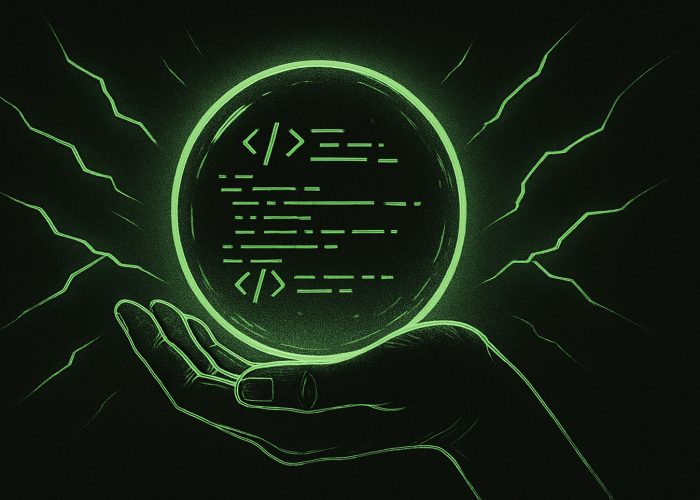The ultimate guide to zero-day vulnerabilities and their effects in 2025 starts with a clear truth: zero-day vulnerabilities rank among the most severe dangers in the modern digital landscape.
A zero-day vulnerability — flaws exploited before patches are available. This makes them incredibly challenging to detect and counter, leaving businesses exposed to substantial operational and financial risks.
In recent years, zero-day exploits have skyrocketed, rising by more than 50%. According to Google Storage, 2023 saw 62 documented exploits actively used, many tied to government-backed attackers. The financial toll of these breaches is enormous, with an average cost exceeding $4.45 million per incident.
What Is a Zero-Day Vulnerability and Why Does It Matter?
A zero-day vulnerability is an unidentified security hole in hardware or software found by attackers prior to the knowledge of developers or vendors. Zero-day refers to the situation whereby developers have 0 days to resolve the issue before malevolent actors could take advantage of it. Commonly utilized in zero-day exploits and zero-day attacks to breach systems, these types of vulnerabilities are among the most important and dangerous cybersecurity hazards.
Why Are Zero-Day Vulnerabilities So Dangerous?
The danger lies in the fact that until a patch is released, zero-day vulnerabilities leave systems exposed. Attackers are essentially working with a head start, exploiting these flaws before organizations can respond.
Unlike typical vulnerabilities with known solutions, zero-days are exploited «in the wild» without immediate defenses, often leading to severe breaches like data theft, system hijacking, or network infiltration. In 2024, these vulnerabilities are more prevalent than ever, and organizations need to be vigilant in protecting themselves from such threats.
How Do Zero-Day Vulnerabilities Differ from Other Types?
Although all vulnerabilities present risks, zero-day vulnerabilities are particularly concerning because attackers exploit them before software developers become aware of their existence. Here’s what sets them apart from other vulnerabilities:
- Known Vulnerabilities: These are publicly disclosed flaws for which vendors provide patches or updates. Once identified, they become part of the Common Vulnerabilities and Exposures (CVE) system.
- N-Day Vulnerabilities: Known security flaws with available patches that remain exploitable if not promptly applied by organizations.
- Zero-Day Vulnerabilities: These remain undiscovered by vendors until after the exploit is in use, leaving organizations exposed for an unknown amount of time.
Zero-Days vs. Regular Exploits
Regular vulnerabilities come with patches and mitigation options familiar to cybersecurity experts. In contrast, zero-days strike without warning, giving attackers an advantage that makes them some of the most feared threats in cybersecurity.
What Makes Zero-Days So Dangerous
The element of surprise and the difficulty in detecting a zero-day attack make these vulnerabilities particularly dangerous:
- No Patches Available: With software vendors unaware of the flaw, no immediate solution exists, leaving organizations vulnerable to attack.
- In-the-Wild Exploits: Hackers can use zero-day exploits to penetrate systems undetected, often backed by state-sponsored groups or advanced persistent threat (APT) actors.
- High-Value Target: Zero-day attacks frequently hit critical infrastructure, government entities, or major corporations, amplifying their impact. For example, the 2023 Spring4Shell vulnerability compromised numerous businesses, exposing sensitive data and disrupting operations.
Notable Zero-Day Attacks
Zero-day vulnerabilities have fueled some of history’s most infamous cyberattacks:
- Log4Shell Attack: Perhaps one of the most notorious zero-days, Log4Shell exploited a flaw in the widely used Apache Log4j library. This attack, discovered in late 2021 and continued through 2023, affected millions of servers and systems globally, leading to widespread data theft and security breaches.
- Microsoft Zero-Day: In 2023, Microsoft disclosed a zero-day vulnerability in its Windows operating system, affecting millions of users. This flaw was quickly weaponized by state-sponsored hackers to infiltrate government systems and steal sensitive data.
- Google Chrome Zero-Day Exploit: A 2023 zero-day in Chrome allowed remote code execution, endangering millions of users until a patch was released.
These cases illustrate the devastating potential of zero-days, especially when they target widely used software or critical systems.
How Can Organizations Stay Informed?
Staying ahead of zero-day threats requires a combination of proactive defense and vigilance. Here are several ways organizations can stay informed:
- Leverage Threat Intelligence: One of the best ways to stay updated on potential zero-day vulnerabilities is by using cyber threat intelligence platforms. Platforms like Google Project Zero and Microsoft Threat Intelligence compile data from diverse sources—dark web insights, research, and attack trends—to provide early alerts.
- Deploy Detection Tools: Tools like Intrusion Detection Systems (IDS) and Endpoint Detection and Response (EDR) can spot unusual activity that might indicate a zero-day attack.
For example, zero-day detection tools can identify irregular traffic patterns or unauthorized code execution attempts, helping organizations respond swiftly.
How to Protect Your Organization from Zero-Day Vulnerabilities
Protecting against zero-days is challenging but manageable with the right approach: by being proactive, you can reduce the window of exposure and strengthen your overall security posture.
- Effective Patch Management: The absence of patches makes zero-days one of the toughest problems. Many attacks, meanwhile, take advantage of unpatched software previously known to have flaws — referred to as N-day vulnerabilities. Using a strong patch management system guarantees that issued patches are used fast and precisely. By reducing delays in patch distribution, automated patch management systems help defend your company before attackers can take advantage of vulnerabilities.
Key Takeaway: Businesses should prioritize fixing critical systems as a part of their vulnerability management plan. Risk mitigation relies on an agile response to updates since zero-day vulnerabilities in cloud settings or network systems typically require immediate attention.
- Adopt Zero Trust: This approach assumes that no network traffic, user, or device should be trusted by default using strict verification and network segmentation to limit the spread of exploits.
- Vulnerability Shielding: Virtual patching or tools like Web Application Firewalls (WAF) and Intrusion Prevention Systems (IPS) offer temporary protection until official fixes arrive.
- Regular Security Audits and Penetration Testing: Penetration testing and bug bounty programs uncover weaknesses, including potential zero-days, before attackers do.
Analytical Point: A vulnerability assessment combined with penetration testing tools can reduce the attack surface by identifying weak points in applications, networks, or hardware before they are exploited by zero-day malware.
- Incident Response Planning: A prepared team can quickly isolate and mitigate zero-day breaches, minimizing damage. An organization will do less damage the sooner it can have a zero-day exploit under control.
- Invest in Threat Intelligence and Detection Tools: EDR, MDR, and threat intelligence tools help spot anomalies and emerging risks early.
The Future of Zero-Day Vulnerabilities
Zero-day vulnerabilities’ future will keep changing as both attackers and defenses get more advanced. Organizations should be aware of these tendencies going forward:
- AI-Powered Detection: AI and machine learning will analyze vast datasets to find trends that can point to a vulnerability even before it is used. Using AI-driven threat information can help companies forecast possible attack paths and guard against next zero-day threats.
- Supply Chain Risks: Attackers increasingly target third-party vendors, amplifying zero-day impacts across ecosystems. Companies must make sure their supply chain security is perfect, especially as more zero-day exploits aim at these weak points.
- Quantum Computing: This emerging tech may have major consequences for cybersecurity. On the one hand, it might enable the zero-days discovery to be accelerated.
In contrast, it could potentially render conventional encryption obsolete by letting attackers pass through security gates significantly more readily. As this technology develops, quantum-resistant security protocols will become essential.
- Bug Bounties: Ethical hackers will play a growing role in uncovering zero-days before exploitation.
Staying Ahead of the Threat
To outpace zero-days, organizations should:
- Track Vulnerability Databases: Monitor CVE and NVD for updates on vulnerabilities.
- Collaborate with Experts: Work with MSSPs that specialize in zero-day vulnerability management. Cybersecurity companies offer expert guidance on identifying and mitigating zero-day threats. Their teams can provide up-to-date threat intelligence, giving your organization an edge in the fight against zero-day exploits.
- Implement Real-Time Monitoring: Invest in real-time threat monitoring tools like threat hunting and attack scans that can flag suspicious behavior and alert your team to potential exploits. These tools continuously analyze your network traffic and system activity, making it easier to detect and respond to zero-day attacks as they happen.
Vigilance in a Zero-Day World
Among the most hazardous and erratic risks in cybersecurity are those zero-day vulnerabilities. These vulnerabilities particularly pose a threat since attackers can take advantage of weaknesses before they are disclosed to developers. Organizations can lower their risk of these attacks by knowing the lifetime of a zero-day vulnerability, putting robust defensive tactics in practice, and keeping informed using threat intelligence systems.
Although zero-day vulnerabilities will never go away, being proactive and diligent will help you guard against these silently yet lethal hazards. In cybersecurity, it’s not about stopping every attack — it’s about spotting and reacting to them before they do permanent damage.




